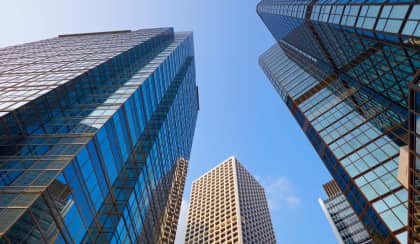Commercial market ends financial year strong: REIA
Despite the 2023 financial year being ‘a mixed period’ for commercial properties, a new report showed the sector managed to wrap it up on a solid footing.

Real Estate Institute of Australia (REIA) president, Hayden Groves, said while the sector faced challenges such as investor uncertainty, a tough leasing market and lower transactions during the period, this was offset by solid reported profits.
The institute’s Commercial Agency Engagement Program (Project CRE) found that despite consumer confidence being at or near record lows for an extended period, certain sectors still exhibited strong business conditions.
Launched in 2022 with global commercial property management software company Re-Leased, Project CRE engages with commercial practitioners and agencies to take the pulse of the sub industry.
In announcing the initiatives latest findings, Mr Groves acknowledged that office vacancy rates remain high across the country, particularly in Sydney and Melbourne. But he highlighted that occupancy across most asset classes have held up well considering the pace of interest rate hikes are yet to fully impact.
CBRE’s H1 2023 Australia’s Industrial and Logistics Vacancy report showed the national average vacancy rate in the country’s industrial and logistics market continues to be in the lowest level globally at 0.6 per cent.
Sass J-Baleh, CBRE’s head of industrial and logistics research, noted that since the second half of 2019, the national vacancy rate has been trending down, reflecting a chronic undersupply.
“We have been closely monitoring the market with respect to hidden vacancy and, given the macroeconomic headwinds, we have noticed some sublease space becoming available. However, this has not significantly affected the current supply situation at this stage.”
Mr Groves noted one key driver of demand for commercial real estate is overseas migration, citing that both March and September 2022 quarters were record years for net overseas migration – a trend he described as “extraordinary” given how strong migration intake was prior to the pandemic.
“Small-scale commercial assets are often a target for new arrivals keen to start a business and with reasonable supply, high-street stock is finding new occupants,” he stated.
He also highlighted the significance of the emerging Build to Rent (BTR) commercial property investment category in recent years, which is now starting to play a crucial role in meeting the demand for additional housing stock from tenants.
This development has, in turn, created new investment opportunities for institutions in the commercial property sector, according to Mr Groves.
In an indication that the BTR wave is just beginning to swell, CBRE’s latest Lender Sentiment Survey showed that BTR is rapidly gaining popularity among lenders, securing the second spot as the preferred sector for new lending with a notable 16 per cent increase compared to the previous survey.
However, he noted the commercial property sector still faced challenges due to high long-term interest rates, even as markets are quite certain that “inflation has peaked”.
“In April 2021, the 10-year bond rate in Australia was 1.68 per cent, which supported low commercial property yields. Now, the 10-year bond rate is 3.47 per cent. While this is down from a peak of 3.71 per cent in February 2023, there is no significant downward trend in long-term interest rates globally,” he stated.
Mr Groves also noted there is lingering uncertainty in the market about how long interest rates will remain “restrictive” in order to get inflation – which rose 5.6 per cent in the 12 months to May – back down to the Reserve Bank of Australia’s (RBA) target levels.
“Indeed, the RBA has been clear that getting inflation back down to the target range of 2 to 3 per cent is their ultimate goal. The impact of high inflation and interest rates to the commercial property sector has been profound,” he said.
Mr Groves cited data from property group JLL showed the fourth quarter of 2022 saw global investment volumes down 58 per cent year on year, a massive decline on the all-time high set in the fourth quarter of the previous year.
And while data from Colliers indicated prime grade office yields increased by 30 bps since the low point in early 2022, the executive highlighted the Australian 10-year bond rate has increased by 196 bps over the same time period.
“Unless there is a major drop to the 10-year bond rate, which seems unlikely while inflation remains elevated (even if falling), capitalisation rates in the commercial property sector are almost certain to increase as we will receive more transactional evidence over 2023,” he concluded.
